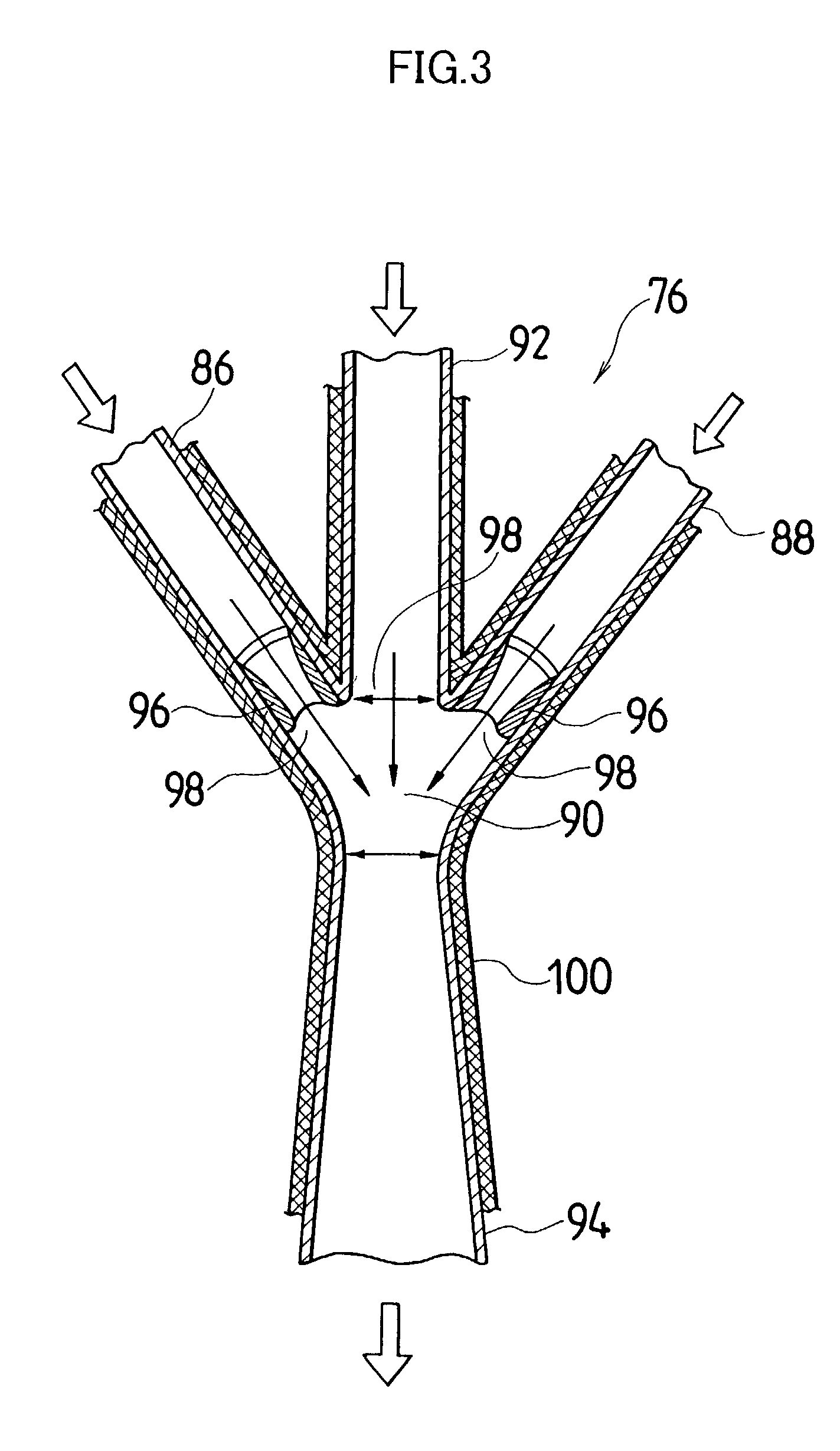Method and apparatus for production of silver halide emulsion
a silver halide and emulsion technology, applied in the direction of instruments, transportation and packaging, photosensitive materials, etc., can solve the problems of contaminating the silver halide grain emulsion obtained, and affecting the production efficiency of silver halide emulsion
- Summary
- Abstract
- Description
- Claims
- Application Information
AI Technical Summary
Benefits of technology
Problems solved by technology
Method used
Image
Examples
Embodiment Construction
[0044] Actual liquid capacity of the mixed tub of instantaneous mixing reactor in FIG. 2 (inner tub capacity+space capacity formed by outside tub and inner tub) was set as 25 mL. The inner tub rotated with a rotational speed of 3000 rpm, and a 5.degree. C. silver nitrate aqueous solution having a concentration of 1.2826 mol / L was ejected out by 1.5 L / minute from one nozzle tubing, and from another nozzle tubing, a 10.degree. C. potassium bromide aqueous solution in which low molecular weight gelatin 2.3% is dissolved and which has a concentration of 1.2836 mol / L was ejected by 1.5 L / minute, and mixing reaction was performed. A mixed liquor was discharged for 10 minutes from the outlet of outside tub. Thereby, silver halide grain nuclei were generated and a mother liquor of 30 L containing the silver halide grain nuclei was stored in the cooled tank. A liquid temperature in the cooled tank was controlled to be 10.degree. C.
[0045] Next, when an amount in the cooled tank reached a desi...
PUM
| Property | Measurement | Unit |
|---|---|---|
| Diameter | aaaaa | aaaaa |
| Hydrophilicity | aaaaa | aaaaa |
| Particle diameter | aaaaa | aaaaa |
Abstract
Description
Claims
Application Information
 Login to View More
Login to View More - R&D
- Intellectual Property
- Life Sciences
- Materials
- Tech Scout
- Unparalleled Data Quality
- Higher Quality Content
- 60% Fewer Hallucinations
Browse by: Latest US Patents, China's latest patents, Technical Efficacy Thesaurus, Application Domain, Technology Topic, Popular Technical Reports.
© 2025 PatSnap. All rights reserved.Legal|Privacy policy|Modern Slavery Act Transparency Statement|Sitemap|About US| Contact US: help@patsnap.com



